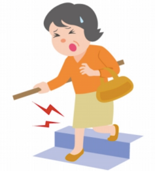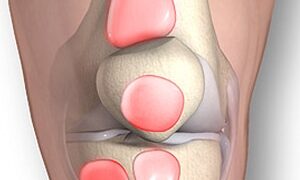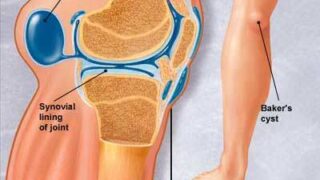J Bone Joint Surg Am. 2020
Mayo Clinicからの報告です。
Spontaneous Osteonecrosis/Subchondral Insufficiency Fractures of the Knee -High Rates of Conversion to Surgical Treatment and Arthroplasty-
Background: Spontaneous osteonecrosis of the knee has recently been termed subchondral insufficiency fracture of the knee (SIFK) to appropriately recognize the etiology of mechanical overloading of the subchondral bone. The purpose of this study was to assess clinical outcomes of SIFK based on progression to surgical treatment and arthroplasty, and to evaluate the risk factors that increase the progression to arthroplasty.
Methods: A retrospective review was performed on patients with a diagnosis of SIFK, as confirmed with use of magnetic resonance images (MRIs). Baseline and final radiographs were reviewed. Baseline MRIs were also reviewed for injury characteristics. Failure was defined as progression to surgical treatment or conversion to arthroplasty.
Results: Two hundred twenty-three patients (71% female) with a mean age of 65.1 years were included. SIFK affected 154 femora (69%) and 123 tibiae (55%), with medial compartment involvement in 198 knees (89%); 74% of medial menisci had root or radial tears, with a mean extrusion of 3.6 mm. Varus malalignment was identified in 54 (69%) of 78 knees. Seventy-six (34%) of all patients progressed to surgical intervention at 2.7 years, and 66 (30%) underwent arthroplasty at 3.0 years. The rates of conversion to surgical intervention and arthroplasty increased to 47% (37 of 79; p = 0.04) and 37% (29 of 79; p = 0.09), respectively, in patients with >5 years of follow-up. The 10 year survival rate free of arthroplasty for patients with SIFK on the medial femoral condyle (p < 0.01), SIFK on the medial tibial plateau (p < 0.01), medial meniscal extrusion (p = 0.01), varus alignment (p = 0.02), and older age (per year older; p = 0.003) was significantly higher than the survival rates of those without each respective condition.
Conclusions: Subchondral insufficiency fractures predominantly involve the medial compartment of the knee and commonly present with medial meniscal root and radial tears. Approximately one-third of patients progressed to total knee
arthroplasty. Baseline arthritis, older age, location of the insufficiency fracture on both the medial femoral condyle and
medial tibial plateau, meniscal extrusion, and varus malalignment were all associated with progression to arthroplasty.
背景
膝の特発性骨壊死は、最近、軟骨下骨の機械的過負荷の病因を適切に認識するために、膝下軟骨不全骨折(SIFK:subchondral insufficiency fracture of the knee)と呼ばれるようになってきた。本研究の目的は、SIFKの臨床転帰を外科的治療と人工関節への進行に基づいて評価し、人工関節への進行を増加させる危険因子を評価することである。
方法
MRIで確認されたSIFKの診断を受けた患者を対象に、レトロスペクティブレビューを実施した。ベースラインおよび最終的なX線写真をレビューした。ベースラインのMRIも損傷の特徴について検討した。Failureは外科的治療への進行または人工関節への転換と定義した。
結果
平均年齢65.1歳の223例(71%女性)が含まれた。SIFKは大腿骨154例(69%)と脛骨123例(55%)に影響を与え、198例(89%)の膝内側コンパートメントに影響を与えた;内側半月板の74%には後根断裂または横断裂があり、平均3.6mmの半月板逸脱があった。内反変形は78膝のうち54膝(69%)で確認された。全患者のうち76例(34%)が2.7年目に外科的介入に移行し、66例(30%)が3.0年目に人工関節を受けた。追跡期間が5年以上の患者では、外科的介入と人工関節への移行率はそれぞれ47%(79例中37例;p=0.04)と37%(79例中29例;p=0.09)であった。人工関節を受けていない10年生存率は、大腿内顆のSIFK(p < 0.01)、内側脛骨プラトー上のSIFK(p < 0.01)、内側半月板逸脱(p = 0.01)、内反変形(p = 0.02)、および高齢者(p = 0.003)の、要件を満たさなければ患者の生存率が優位に高かった。
結論
軟骨下不全骨折は主に膝内側コンパートメントを侵し、一般的に内側半月板後根断裂と内側半月板横断裂を呈する。患者の約3分の1は人工関節に進行していた。ベースラインの関節炎、高齢、大腿骨内顆と内側脛骨プラトーの不全骨折の位置、半月板逸脱量、および内反変形はすべて人工関節への進行と関連していた。
JBJS-Am-2020-Spontaneous-Osteonecrosis-Subchondral-Insuffuciency-Fractures-of-the-Knee-SONK高齢者の特発性膝骨壊死は、半月板断裂と半月板逸脱を伴う場合に、軟骨下骨に機械的な過負荷がかかった結果として発生する可能性がある高く、そのためSIFK(subchondral insufficiency fracture of the knee)と定義が変わりつつあります。SIFKの進行と外科的治療への転換を検討した複数の研究がりますが、ほとんどの研究はサンプルサイズが小さく、独立した危険因子を同定するには力不足であるといわれています。さらに、フォローアップ期間が短いため、手術への移行率や変形性関節症に移行する割合を正確に評価することができませんでした。この論文では(1)外科的治療と人工関節への移行に基づいてSIFKの臨床転帰を評価し、(2)大規模なレトロスペクティブコホートにおいて、人工関節への移行を増加させる危険因子を評価しています。
この論文で内側半月板横断裂と内側半月板後根断裂がSIFKの寄与因子であることが明らかになりました。外科的治療への移行率(34%)と人工関節への移行率(30%)が高く、追跡期間5年以上の患者では手術的治療への移行率は50%近くだったのです。これは大変深刻な問題で人工関節すれば結果は同じという考え方もあると思いますが、出来れば予防的な手術に重点を置きたいところです。
初診時のKL-grade、年齢、大腿骨内顆および/または内側脛骨プラトーのSIFK、および半月板逸脱はそれぞれが独立した要因として捉えられていますが、これはすべて関連しており、半月板断裂(後根・横)のような半月板hoopが破綻することによる軟骨へのダメージの大きさを深刻に受け止める必要があります。
内側半月板根断裂に対する部分的な半月板切除術を評価した症例対照研究では、内反変形を呈する膝においては術後2年の時点人工関節への移行率が2倍高いことから、知識のない医師による簡単な手術は患者さんにとってデメリットとなる可能性があると考えます。
5c2dab1c3064cd2df1ca6bfd9fd8a2a2
















